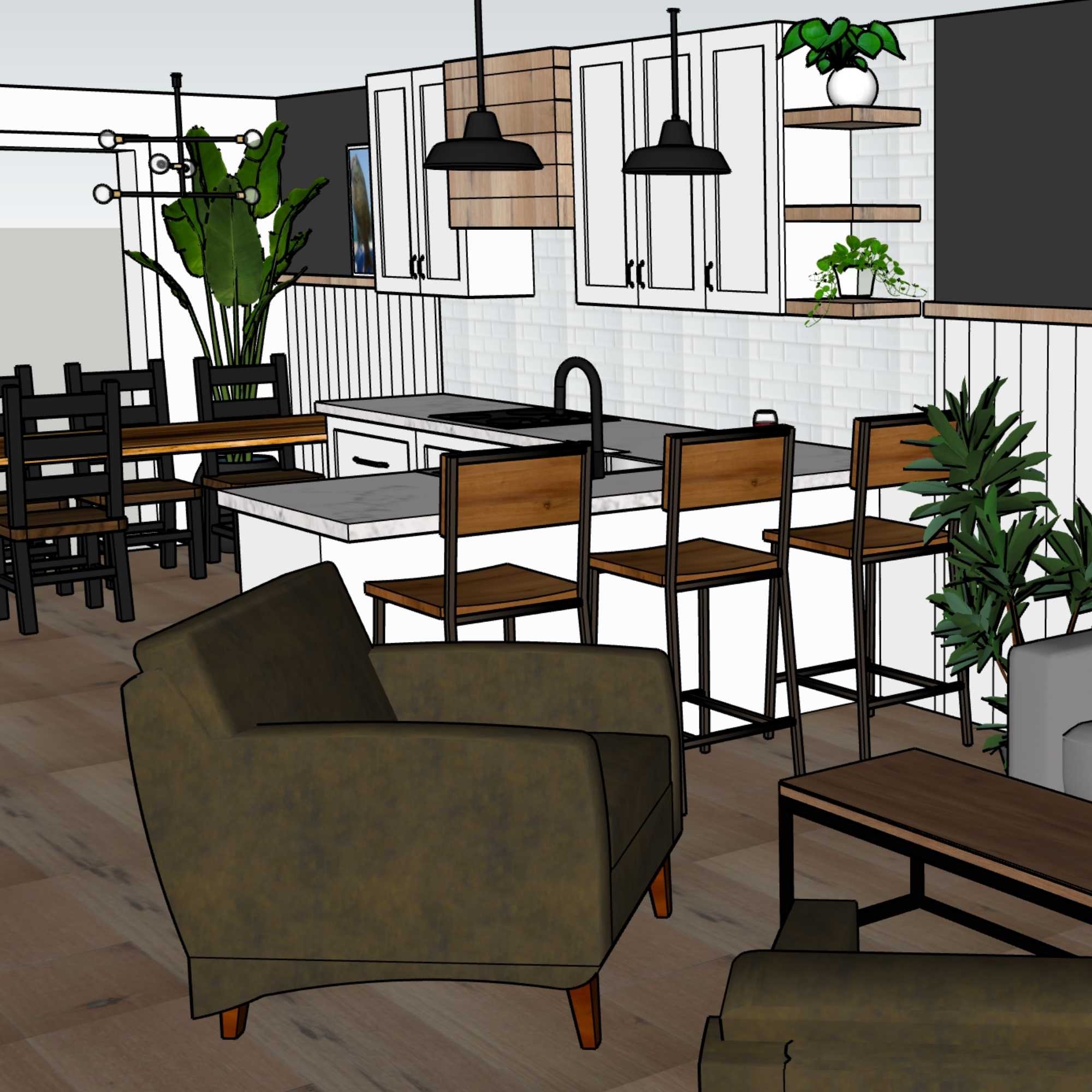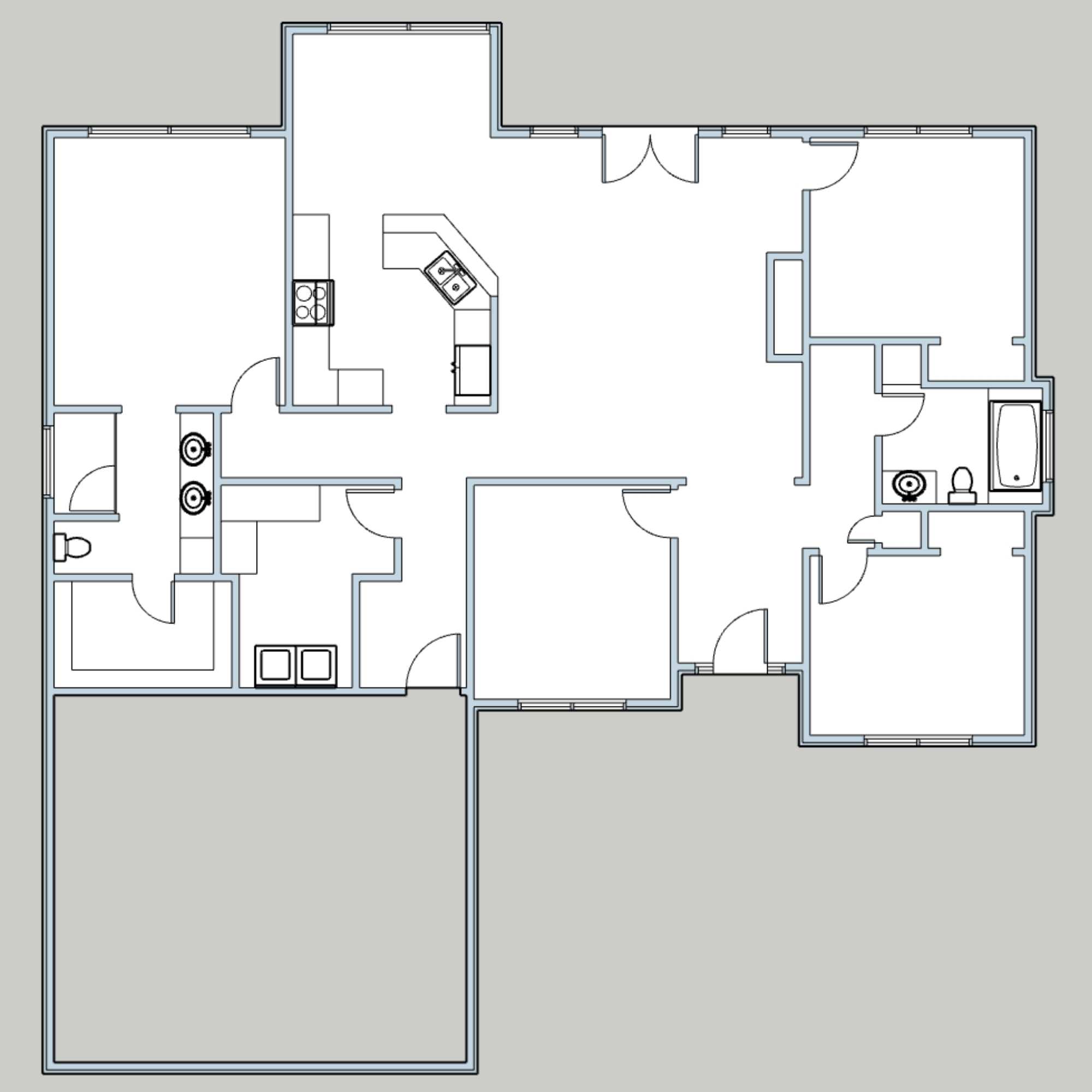Updated September 28, 2023
Your Renovation Strategy Starts the Minute You Decide to Renovate
When some people decide to renovate their homes, they start cold calling contactors to get an idea of the cost so that they will know what sort of budget they will need. The problem with this approach is that you're asking a contractor, “how long is a piece of string?” or “how much will a new t-shirt cost?” These questions, as you probably realize, are completely useless without context and more information. What do you need the string for? Is the Tshirt from WalMart or Louis Vuitton? (Do they even make t-shirts?)
A contractor is completely unable to price a job without specific details—and any who do provide an estimate will never stick to it, because it was based on nothing to start with. But this is not the mistake I'm talking about today...that's for another day.
Today's episode is about the other group of people, perhaps some who have renovated before, who think they are savvier than that first group, who say, “No... it's too soon to speak to a contractor. I'm going to go to an architect for plans first. Then, the contractors will have something to price out properly.”
Well guess what? While I applaud that next level thinking…that's actually almost as bad as the first group. (Sorry!) The truth is that neither of those approaches will be the ticket to getting your dream home affordably. Here's why.
My Story (Where I Wasted Over $2,500)
When I decided to renovate several years ago, I made this critical mistake I want you to NOT do.
As a project manager, I already knew that a contractor could never quote a job without a clearly defined scope, so I spoke to a friend that had just renovated and got their referral for an architect. I figured that the professional drawings would be perfect to send to contractors, along with some scope details, to get an accurate estimate.
So I figured out my layout based on everything I had been thinking for the past few months, and then drew it up in an Excel doc with a little cell representing each square foot. I emailed it over to the architect and he gave me a quote for $5,000 + 13% tax to do the drawings and manage the permit process. I was horrified by the price, but I didn't see any other way around it. I needed the drawings, I didn't know how else to get a permit and move forward, and I trusted that they would help me get my dream home. These were professional architects afterall.
So I paid 50% up front ($2,500 + 13%) and got the process started. Here's what happened after that:
- They sent a junior out to my house to take measurements. It took 1.5 hours.
- They turned those measurements into “existing” drawings and exterior elevations.
- We had one phone call to discuss my layout and what my little boxes meant.
- They duplicated the existing drawings and then updated the second batch to include my new layout from my Excel spreadsheet.
- I was so excited to finally see my house as-is and the new layout in an accurately scaled 2D version for the first time. It blew my mind.
- I sent out my existing and new layouts along with a scope outline to some contractors, and found out that the cost of the project I wanted was well outside my budget.
Renovation: dead.
$2500 + tax: gone.
I had spent $2,825 to get plans made for a renovation I couldn't afford to execute. I felt sick.
I won't share the details of how I turned myself around in this article, but in short, I decided to own the project, dig into every detail myself, learn how to make new drawings myself, and create a hyper-specific renovation plan (which I now teach you to do in Renovation Planning Academy).
Fast forward many months, and I had a renovation that I could actually afford. I never got that $2,825 back, but I got a valuable lesson in its place. (Remember that in life, you either get what you want, or you get the lesson you need. You win or you learn.)
Today I'm sharing that lesson with you—for FREE. Enjoy!
Why People Go Straight to an Architect
(and the truths you may not realize)
Here are some myths about architects and their skills that explain why people go straight to one for drawings at the start of their renovation project. I'll reveal the myth that is actually responsible for driving people's actions, and the truth for why it's not a good idea.
1. The “Professional = Mind Reader” Fallacy
Myth: Since they are experts in their field, architects will know how to extract the information from your brain that you don't yet know is there, let alone know how to communicate it, and give you your dream home plans with very little input from you.
Truth: Architects may be excellent visionaries, but they are not mind readers. Every person and their home is a unique puzzle to be solved because your existing home footprint must be considered alongside your individual requirements for change. An architect may be able to make recommendations based on general best practices, but until you REALLY know what you want, nobody (professional or otherwise) can tell you what's best for you or your home.
2. The “Professional = Best Service” Fallacy
Myth: Since they are licensed professionals, architects will take the time to educate you on the right choices and explain their reasoning for as long as it takes for you to understand. Your architect will spend hours poring over your job, really exploring every possible option to get the perfect design, and then patiently explain why it's the superior choice for your home—all without billing you extra for your lack of knowledge, input, and awareness.
Truth: Architects offer a licensed, professional service for which they spent years in school. And moreover, they are a service-based business. When you combine these two facts, it's clear that an architectural firm needs to bill well for the time they spend. When you pay for their time, whether it's a flat fee or hourly rate, their main priority is to get the job done as quickly as possible (and it's still expensive).
So they will put junior staff on the tasks wherever possible. They will charge a flat fee when the job looks “easy” and then not push you beyond your comfort zone. They will charge an hourly fee when the job looks complicated (or you look like a difficult client) so they aren't out of pocket, and then do whatever they can to always be efficient.
That's not because they are bad people or bad architects—that's because they are a service-based business. Whenever you pay another human for their time, they will always try to get it done as quickly as possible. The absolute perfect layout is not their priority. “Good enough for the client to be happy” is their only benchmark.
(And guess what…if you go to the architect before you do your own homework and planning, then you are probably going to be happy with the things that aren't actually best for your home, because you're only basing your wants on what you see on Pinterest and HGTV)
3. The “Construction Expert” Fallacy
Myth: An architect can accurately design a renovation project that will fall exactly into a homeowner's budget.
Truth: They can't. It's that simple. Here's why.
- It takes a long time to price out a job, and those prices are dictated by your specific choices in finishes, as well as your workarounds for structure, HVAC, electrical and plumbing. Until you have all those answers, you can't get an accurate budget. (Remember the tshirt analogy?)
- You wouldn't want to pay an architect's expensive rates for them to spend the time to collect this information for you.
- The architect isn't the builder, and nobody can accurately quote a job for somebody else. You can get close if you put in the effort, but again… see points 1 and 2.
So what does this mean? Even if you have a reasonable budget for construction, asking your architect to design you a solution that fits that budget is more or less impossible. So when they give you the plan, and you find out it costs too much, then you have to go back to the original plans, and get them reworked. That's going to cost you more money.
Plus, only you can determine which features are important enough to keep, and which ones you'd prefer to scale back on in order to fit the project within your budget.
You need to know your own priorities, combined with how to find creative solutions, in order to craft a renovation plan that fits in your budget and meets your needs. This is the power you find inside Renovation Planning Academy.
4. The “Required Talent” Fallacy
Myth: An architect is required for every single renovation project.
Truth: Lots of renovations don't require an architect or structural engineer. If you don't need any permits, then you don't need professional drawings at all, and you can do all the planning yourself. Even if they do require a permit and professional drawings, an architect is often not the most cost-effective resource to complete this task. I certainly made that error on my project. I never needed an architect in the first place.
If you're not sure if your project needs a permit or architect, send me a DM on Instagram or email me and let's chat.
5. The “Complex Skill” Fallacy
Myth: Only licensed professionals are able to design fabulous layouts, create drawings, and make amazing design choices for a home renovation project.
Truth: Architects are trained well and produce amazing buildings and designs. They have in-depth knowledge that the rest of us don't have. I do not want to suggest that they are not highly skilled.
However, designing a 2D layout and even a 3D model of that layout with a Computer Assisted Drawing (CAD) software is quite easy to learn. So easy, in fact, that I teach it to homeowners inside Renovation Planning Academy so that they can play and identify their ideal new layout for as long as it takes. Homeowners can test rooms in new locations, bigger windows and bi-fold doors. They can test different tile, wallpapers, countertops, as well as drawer configurations and furniture. Creating your own layouts and documentation** is well within your reach as a homeowner, and you don't need an architect for figuring out the details of what you want.
Important disclaimer:
**Before I move on, I must clarify that I am not talking about homeowners doing their own formal construction, permit, or structural drawings. You must always have a licensed professional dictate the building requirements. What I'm referring to is the long phase of back and forth to identify your final plans before you get formal drawings done.
What to do Instead of Going Straight to an Architect at the Start of your Renovation Planning Process
Five fallacies later... what does all this mean for you? What should you do instead of going directly to an architect?
You need to plan your renovation yourself first.
Planning your renovation on your own, with the help of a step-by-step implementation program like Renovation Planning Academy, gives you the education, strategy, and each individual action to take so that you can be in control of your project and get more out of your money.
My simple framework, crafted after my own renovation experience and nearly two decades of Project Management, is a sure way to make confident progress in your renovation while you save yourself from costly mistakes.
It's the program I developed after wasting money and making mistakes—so that you don't do the same. Here are three lessons I learned from my own experience.
1. Chances are, you may not need an architect at all
“But wait, you just said I need a professional to do my permit drawings!” Yes I did, and that's still true. But depending on your project scope and details, there are other resources that can help you. I go into a lot of detail on this inside Renovation Planning Academy in Module 6 so that you can choose the right resources to help you at the right stage of your project. And often, it's not an architect you need for your drawings. (Or, it may not be your most cost-effective option).
2. The architect (or other resource) should be brought in at the end of the planning
No matter who you choose, it's imperative that you go to them with a final design and complete renovation plan, which means you are going to them near the end of your planning process. You go to them at the end so that you have something to reference and discuss. By this point, you'll already know exactly what you want, you'll have exhausted all your options, thought through all the permutations, and identified the specific details for which you need their help.
Remember that their skills for interior layout planning and picking finishes are NOT specialized, so you can do those tasks yourself. Where you specifically need the professional is to dictate the structural requirements and specifications that are needed to support the changes you've already drawn.
It's essential to remember that if you want to save money and get your dream home on a tight budget, then there needs to be a division of labour in the act of laying out and designing your renovation or new build. Your job is to figure out what you want, what it should look like, and how it should function. Your architect or structural engineer's job is to specify how the building must be updated to make your changes happen.
3. Handing over the design of your new build or renovation to someone else means you also put them in control of your budget.
When you leave all of these budget decisions to other people, and you are unaware of the actual cost of things yourself, you will never be in a position to control and own your project. And if you don't own it, other people will make money and you will lose money.
Keeping control is how you keep the money in your pocket.
Giving your hard earned money to an interior designer, architect, design build company or contractor BEFORE you've planned your renovation or new build yourself first, will result in wasted money in 100% of projects.
I don't think I could say it more bluntly...but I want this to hit home.
If you don't plan your renovation yourself before you call a professional, then be prepared to make mistakes and waste money. It's just that simple.
It's not that these people aren't good at their jobs. It's not that you don't need or get value from these roles. The one point of this entire article is not whether or not you should use these professionals—it's a question of when.
It's all about the timing and the order of operations.
Until you go through the process of figuring out your renovation on your own, you won't have context for the conversations you need to have with these professionals. You won't know what problems you're experiencing, and therefore, how they specifically need to help you. What they say to you won't have meaning because you'll have nothing to compare it to. You won't have the right questions to ask, you won't know what you're missing out on with their first or second bad suggestion, and you won't know what's important to you.
Look, when you go through my renovation planning process inside Renovation Planning Academy, where I hold your hand through every single micro action you need to take, prompt you to think strategically about the right decisions at the right time, and help you create plans for your layout, utilities, structure, aesthetic finishes, and even finding the right team for your project, then YOU KNOW exactly where you've made great decisions, and where you need a bit more input from an “expert”.
Because that will happen. If you are planning to remove walls, make a window bigger, add a bathroom, pretty much any major change, then you're going to need a structural engineer to advise you. But coming into that conversation with a background of knowledge, pre-thinking, questions and specific goals identified, is going to get you a way better result, more efficiently, than if you called up a professional and said, “I don't know what I don't know, or what I need, and I don't know how to ask. Help”.
YOUR KEY TAKEAWAY THOUGHT
It takes a lot of thinking to get to the best end solution. You can either pay someone else to do it for you, or save the money and DIY that planning. Renovation Planning Academy gives you a path and a framework to do the planning yourself so that you can get your dream home under a tighter budget.










 How to Beat Overwhelm with Your Home Renovation
How to Beat Overwhelm with Your Home Renovation The Important Documentation You Need to Guarantee a Successful Renovation
The Important Documentation You Need to Guarantee a Successful Renovation